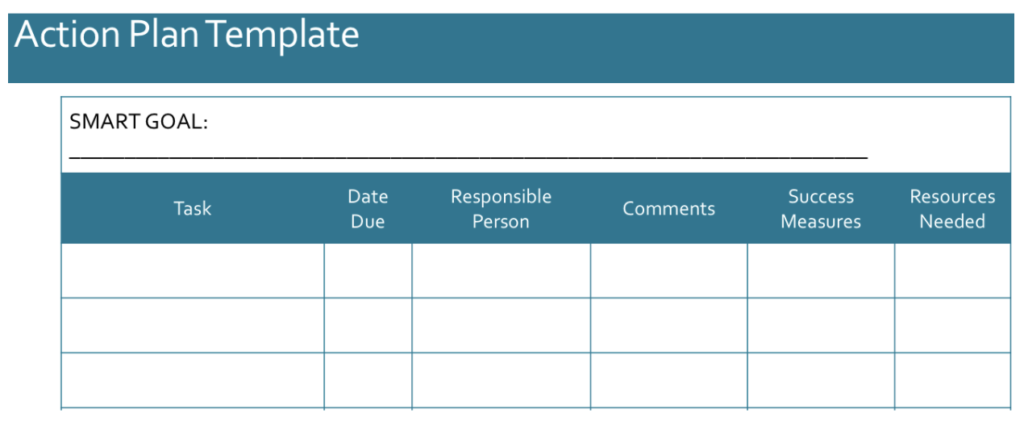This One Thing Will Turn Busyness into Productivity, Taking Your Team Further Quicker
What’s an action plan and why is it important?
Simple, but not always easy; and this is something often overlooked. That’s why I want to shed some light on this today.
Action plans are nothing more than a detailed list of actions and steps, which helps you organize who will do what and by when.
Action plans become your daily game plan of activities and tasks which will continue to move each individual and your team toward achieving your SMART Goals and realizing your vision.
Chances are, you’ve experienced times in your career when you or your team have come up short of the expectations or goals your boss or senior leaders set for you.
Usually, when that happens, our senior leaders only want to know one thing – what are you doing about it.
Having dialed in, detailed action plans give you the ability to inform anyone – your team, your peers, your customers, and especially your own leaders exactly what you’re doing to achieve the objectives and or right the ship.
Many mistake “busyness” for “productivity”. Here’s what busyness is:
- Frantic work
- Working “hard”
- Fueled by having to be “perfect”
- Trying to be good at “everything”
- Multi-tasking, without focus
- Always rushed
When you think of the term “productive”, how would you describe the behavior of a person who stays “productive”?
Here’s what productivity is:
- Focused work
- Working “smarter”, not harder
- Fueled by purpose
- Great at delivering the “important” things
- Relaxed
Productivity is a measure of a person’s efficiency. In other words, productivity is converting inputs to outputs. We put in the time, and then ultimately produce something. This is the difference between being busy and being productive.
You’ll know you have productive employees when they consistently “produce” results – whether it’s sales, satisfaction scores, completing projects on time, creating products, or whatever your productivity measure is.

Notice the columns:
- Task – this column is a list of the specific action steps or tasks you’ll need someone (could be you or those on your teams) to accomplish to achieve the SMART Goal
- Assigned To – this column notates the person or people to whom you’ll assign the action steps and tasks
- Resources Needed – this column lists the specific tools, information, support, or resources (financial, staffing, or equipment) needed to complete the task
- Success Measures – this column is to identify what metrics you and others will use to measure success. For example, revenue, profits, units, percent increase or decrease
- Due Date – this column may be the most important factor in turning busyness into productivity; it holds everyone accountable to deliver on their task by a certain date
This is tougher than it seems. That’s why very few leaders will actually make it this far into the strategic planning and coaching process. You’ll also become known as a leader who can inspire and motivate others to execute a game plan.
This is the secret sauce to becoming a leader who’s known for delivering results with and through others.
“Management is power over people. But leadership is power with people.”
~ Mark Sanborn, Author
Great coaches are as graceful as they are wise, and as driven as they are diligent. The environments they create inspire and motivate people to grow and develop in ways they never knew they needed to grow.
We respond to great coaches because they help us get comfortable getting uncomfortable. They certainly say the right things, at the right times, for the right purpose; but it’s also how they say it which inspires us to dig deep within ourselves to give our best instead of shutting down.
Learn how we can help your leaders become great coaches here.





